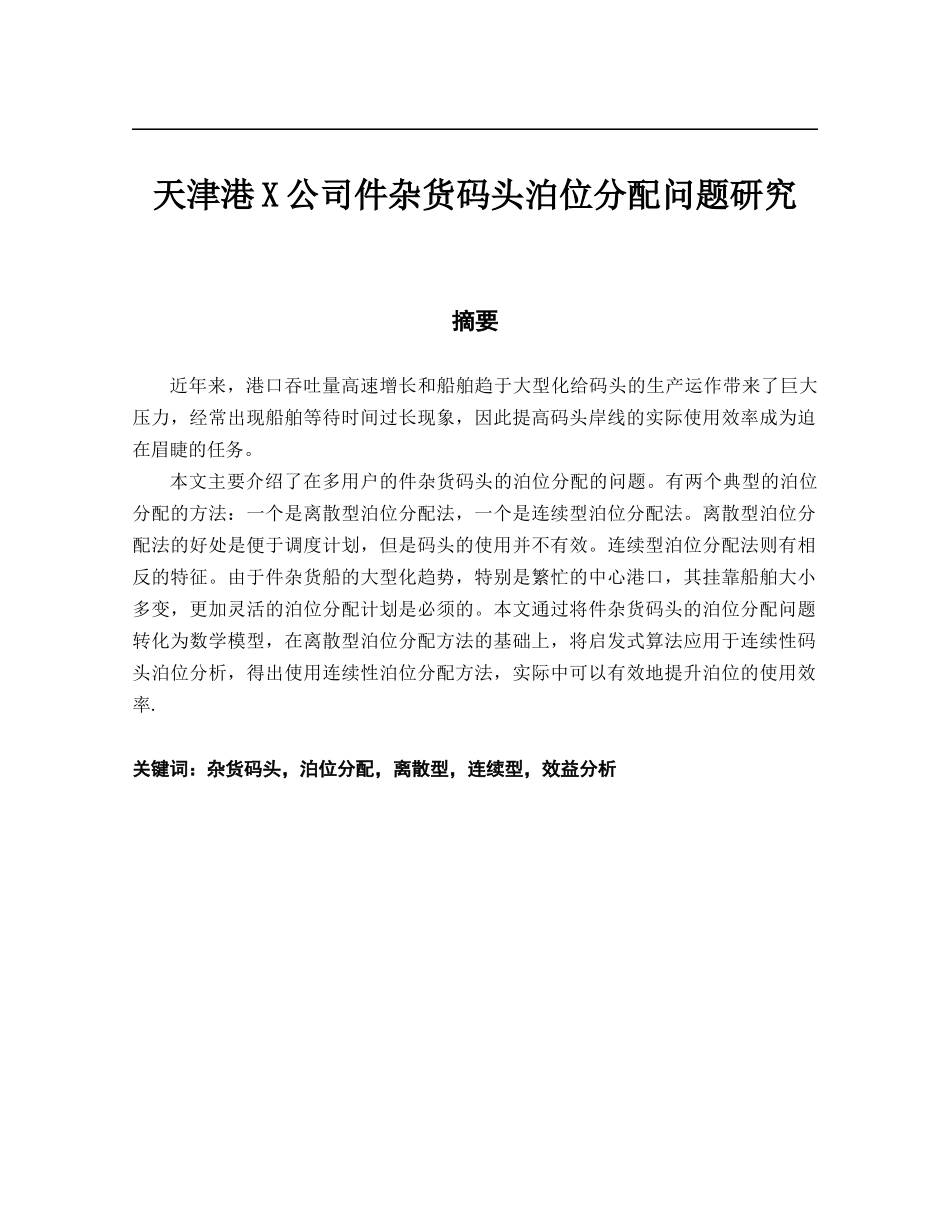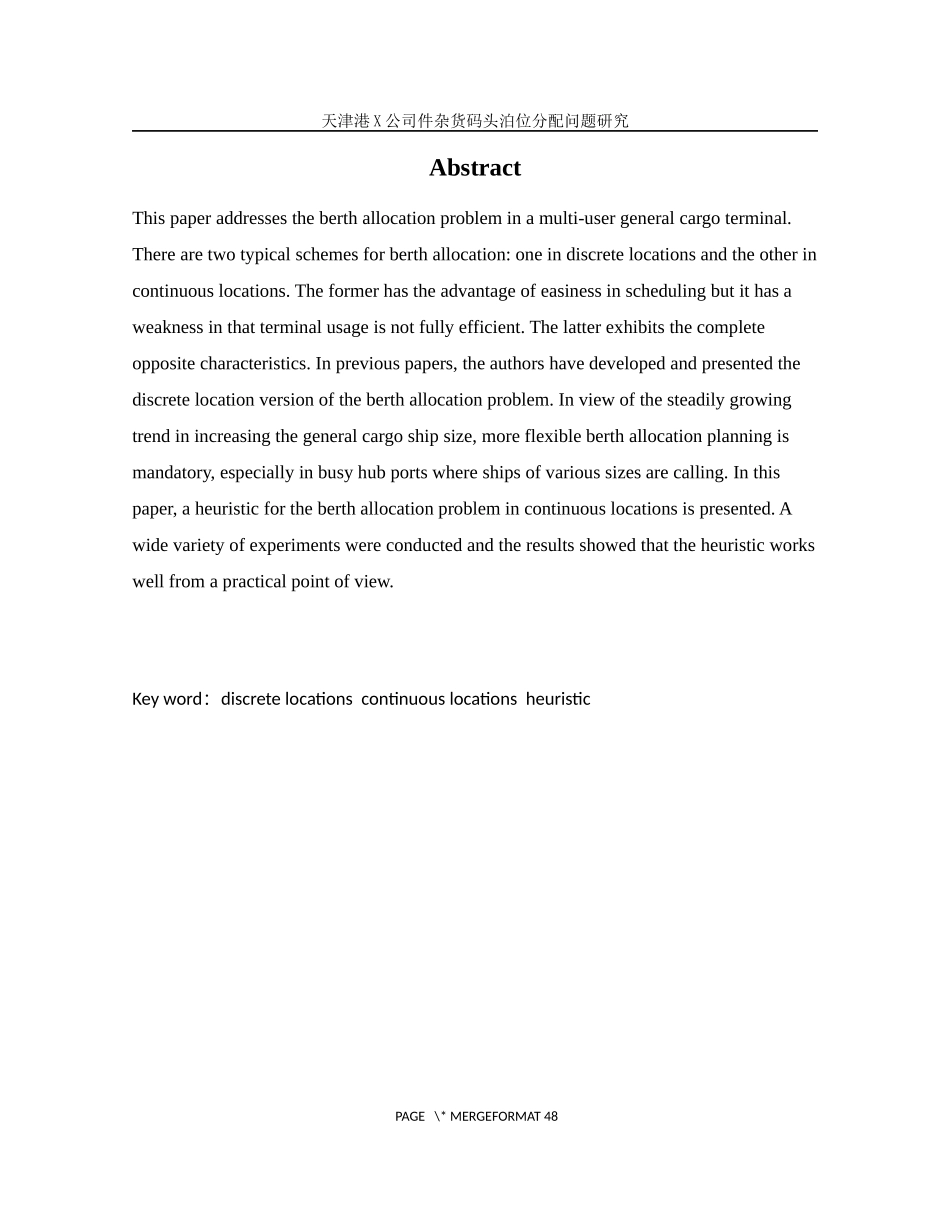天津港 X 公司件杂货码头泊位分配问题研究 摘要近年来,港口吞吐量高速增长和船舶趋于大型化给码头的生产运作带来了巨大压力,经常出现船舶等待时间过长现象,因此提高码头岸线的实际使用效率成为迫在眉睫的任务。本文主要介绍了在多用户的件杂货码头的泊位分配的问题。有两个典型的泊位分配的方法:一个是离散型泊位分配法,一个是连续型泊位分配法。离散型泊位分配法的好处是便于调度计划,但是码头的使用并不有效。连续型泊位分配法则有相反的特征。由于件杂货船的大型化趋势,特别是繁忙的中心港口,其挂靠船舶大小多变,更加灵活的泊位分配计划是必须的。本文通过将件杂货码头的泊位分配问题转化为数学模型,在离散型泊位分配方法的基础上,将启发式算法应用于连续性码头泊位分析,得出使用连续性泊位分配方法,实际中可以有效地提升泊位的使用效率.关键词:杂货码头,泊位分配,离散型,连续型,效益分析天津港 X 公司件杂货码头泊位分配问题研究AbstractThis paper addresses the berth allocation problem in a multi-user general cargo terminal. There are two typical schemes for berth allocation: one in discrete locations and the other in continuous locations. The former has the advantage of easiness in scheduling but it has a weakness in that terminal usage is not fully efficient. The latter exhibits the complete opposite characteristics. In previous papers, the authors have developed and presented the discrete location version of the berth allocation problem. In view of the steadily growing trend in increasing the general cargo ship size, more flexible berth allocation planning is mandatory, especially in busy hub ports where ships of various sizes are calling. In this paper, a heuristic for the berth allocation problem in continuous locations is presented. A wide variety of experiments were conducted and the results showed that the heuristic works well from a practical point of view.Key word:discrete locations continuous locations heuristic PAGE \* MERGEFORMAT 48摘要......


